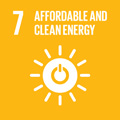- Docente: Tommaso Tabanelli
- Credits: 4
- SSD: CHIM/04
- Language: Italian
- Teaching Mode: In-person learning (entirely or partially)
- Campus: Ravenna
- Corso: First cycle degree programme (L) in Chemistry and Technologies for the Environment and Materials (cod. 8515)
Learning outcomes
At the end of the course, the student will have the basic knowledge on the preparation, characterization and application of heterogeneous catalysts, identifying correlations with the topics covered in other courses. In particular, the student has learned the basic concepts of catalysis, the major classes of catalysts (correlating properties with the characteristics of the reactions), the most popular methods for their preparation and techniques of the usual characterization of surface and bulk.
Course contents
• General overview: definition of catalyst and catalytic reaction. Concepts of activity, selectivity and catalyst lifetime: their mutual influence and the effect on the choice of the most suitable reactor solution applied at industrial level. Physical and chemical adsorption. Steps in the catalytic process. Green chemistry.
• Theoretical and technological aspects of heterogeneous catalysis. Main classes of catalytic reactions and types of catalysts used: oxidation, hydrogenation and dehydrogenation, acid catalysis processes. Catalysts design for a specific reaction.
• Methods for the preparation of catalysts, including nanomaterials and nanoparticles.
• Characterization methodologies for heterogeneous catalysts. Conventional methodologies and advanced techniques for catalyst characterization (in situ and/or ex situ).
Readings/Bibliography
1) C. H. Bartholomew, R. J. Farrauto ”Industrial Catalytic Processes”, Wiley, New Jersey, 2006.
2) G. Rothenberg “Catalysis – Concepts and Green Applications”, Wiley-VCH, Weiheim, 2008.
3) M. Baerns Ed. “Basic Principles in Applied Catalysis”, Springer, 2004.
4) J.W. Niemantsverdriet “Spectroscopy in Catalysis- An Introduction”, Wiley-VCH, 2007.
5) F. Cavani, G. Centi, S. Perathoner, F. Trifirò Eds. “Sustainable Industrial Chemistry” Wiley-VCH, 2009.
Teaching methods
A wide variety of teaching techniques, from traditional lectures, practical learning (group exercises on topics related to the course), as well as the use of illustrative videos on industrially applied chemical processes, including those relevant to the regional context, will be utilized.
Assessment methods
Assessment will be by oral exam. Marks are given based on knowledge of the program and oral skills (appropriate scientific Language, etc.).
Teaching tools
The course takes place through lessons and exercises carried out in the classroom. These activities also make use of media such as power point presentations, videos and graphics tablets; all the teaching material presented is accessible to students on the teaching application https://virtuale.unibo.it/
Students with learning disorders and\or temporary or permanent disabilities: please, contact the office responsible (https://site.unibo.it/studenti-con-disabilita-e-dsa/en/for-students ) as soon as possible so that they can propose acceptable adjustments. The request for adaptation must be submitted in advance (15 days before the exam date) to the lecturer, who will assess the appropriateness of the adjustments, taking into account the teaching objectives.
Office hours
See the website of Tommaso Tabanelli
SDGs




This teaching activity contributes to the achievement of the Sustainable Development Goals of the UN 2030 Agenda.
